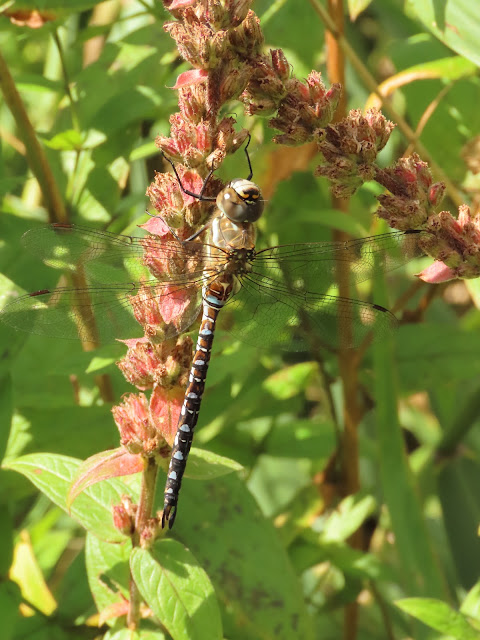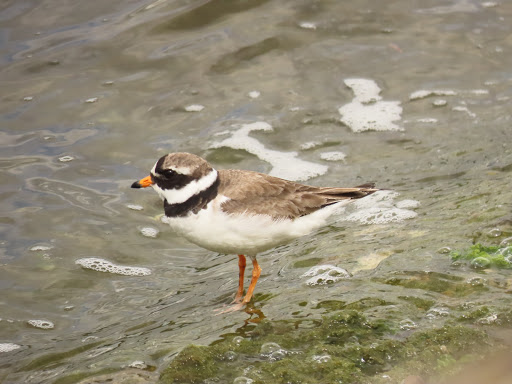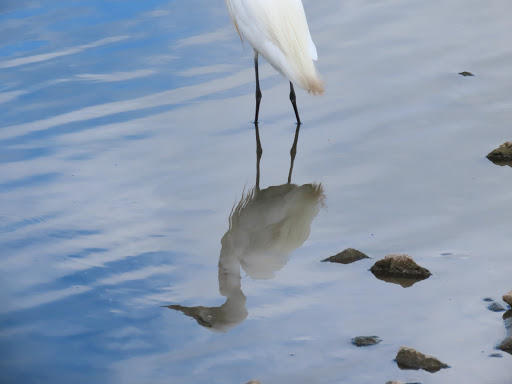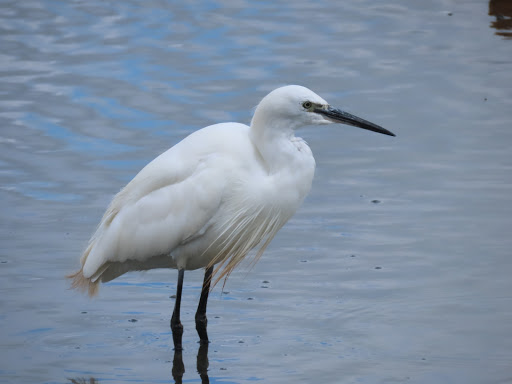Labrador Bay, near Teignmouth is one of the best places to see cirl buntings, a finch-like bird which is almost entirely limited to the coast of South Devon. Last year I made my first trip to this reserve but the weather was cloudy and damp with a brisk breeze and I failed to find any cirl buntings. This year I decided to break my journey home from a family holiday in Cornwall and stop off again at the reserve in the hope of better success.
As I drove through Teignmouth, there was a thick mist and I wondered if this would be the case at Labrador Bay. I had been driving in and out of foggy conditions most of the route but it did look as if the sun might break through eventually.
On arrival at the car park, I refreshed myself with coffee from my flask, whilst watching to see if any birds could be seen from the car. I made out two silhouettes on some bushes in front of me but with it was impossible to see any colours; it was still a bit misty and any brightness was coming from behind the birds.
On a sunny day, the reserve carpark gives glorious views of the coast and out to sea but it was hard to make it out today. Nevertheless, now I was here I decided to make the best of it and follow one of the recommended trails. Thankfully the mist started to lift and the sun began to break through as I entered the reserve through a small gate.
As I walked, I picked out the sound of some birds calling from the hedgerows nearby. I quickly checked on my phone as to what a cirl bunting call might sound like and listening again, realised that it was cirl buntings I could hear. I stopped and waited a little way away but saw and heard nothing more. Encouraged, I carried on, entered another field and then I heard the sound again, This time I located the bird at the top of a bush and on looking through my bincoculars, realised that I had just spotted my first cirl bunting, distinguished by its black and yellow head colouring. However, after a couple of distant photo shots, it flew off, joined by a couple of other birds.
As sun came out, so did the butterflies in the grasses and hedges; mostly meadow browns and gatekeepers, but then I became distracted by one that was larger and slightly different, which settled with its wings open. A closer look at its yellow and brown upper wing pattern, identified it as a wall brown, a butterfly that I've failed to see so far this year so that was an unplanned year tick for me.
Back to the cirl buntings, as I walked, I was aware of several more birds calling from the hedgerows. Walking backwards towards the centre of the field, I crouched down in the grass, hoping to appear less obvious against the skyline. Sure enough, I soon spotted several more cirl buntings at the top of the hedges, but again fairly distant for my camera to capture a decent photo.
A walker approached and we had a short conversation about the birds that could be seen on the reserve; apparently peregrines are often seen too although I wasn't looking for these today.. He then pointed towards a gorse bush behind me where I could see two cirl buntings perched, although one quickly flew off. The other, possibly a juvenile, stayed put, occasionally letting out a cheep, and allowed me to get much closer and get some photos ,before, it, too flew off.
I decided that it was time for me, too, to leave, so, satisfied to have had some good views of at least half a dozen or more cirl buntings I made my way back to the car, to drive the remaining distance home.






















































.JPG)
